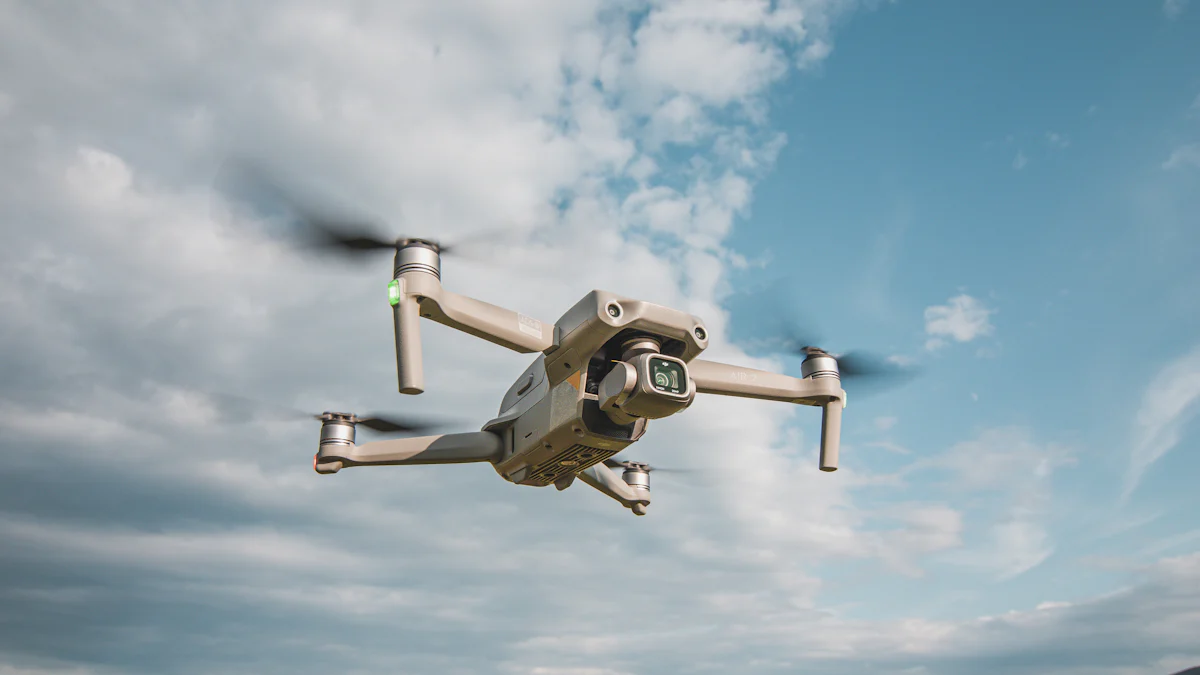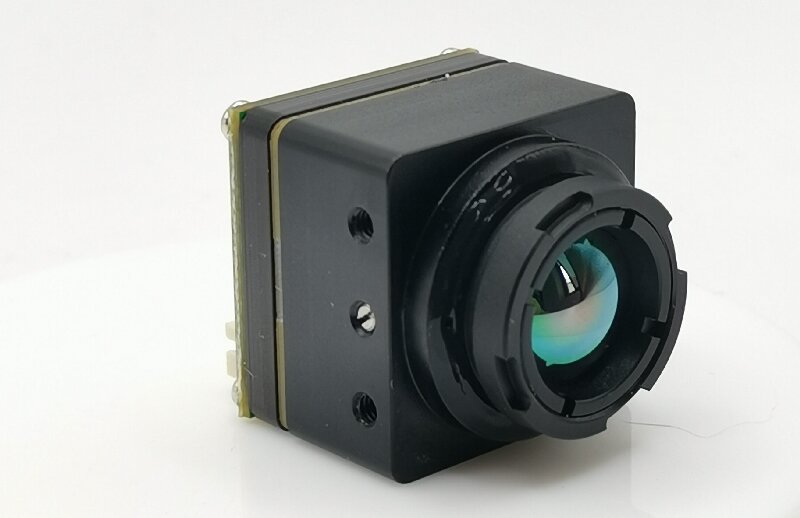How to Utilize Thermal Imaging for Effective SAR Rescue Kits and Drones

Understanding Thermal Imaging in SAR Operations
Thermal imaging technology plays a crucial role in Search and Rescue (SAR) operations, offering invaluable assistance in locating missing persons and providing real-time data for informed decision-making.
The Basics of Thermal Imaging Technology
How Thermal Cameras Work
Thermal cameras, also known as infrared (IR) thermal imaging cameras, operate by detecting the heat emitted by objects. They work on the principle that all objects emit infrared radiation as a function of their temperature. The camera then captures this radiation and converts it into a visual representation of the temperature differences, creating an image known as a thermogram.
Types of Thermal Imaging Cameras

There are various types of thermal imaging cameras used in SAR operations, including handheld devices and those integrated with drones or rescue kits. These cameras utilize different technologies such as uncooled microbolometers or cryogenically cooled detectors to capture and display thermal images.
Benefits of Thermal Imaging in SAR Missions
Enhanced Visibility in Various Conditions
Thermal cameras offer enhanced visibility during low-light conditions, adverse weather, or dense foliage where traditional optical cameras may struggle to provide clear images. This capability is particularly valuable in SAR missions conducted at night or in challenging terrains.
Real-time Data for Quick Decision Making
One of the key advantages of thermal imaging cameras is their ability to provide real-time data. This enables SAR teams to make quick decisions based on live thermal imagery, improving their efficiency in locating individuals and assessing the surrounding environment.
By leveraging advanced thermal imaging technology, SAR operations can significantly enhance their search capabilities and response effectiveness.
The Role of Thermal Cameras in SAR Drones
Integrating Thermal Imaging with Drones
When it comes to Search and Rescue (SAR) operations, the integration of thermal imaging technology with drones has revolutionized the way teams conduct missions. Drones equipped with thermal cameras offer a significant advantage in locating missing persons and providing critical real-time data for informed decision-making.
Types of Drones Suitable for SAR
Various types of drones are suitable for SAR operations, each with its own set of capabilities and features. For instance, quadcopters are nimble and can navigate through tight spaces, making them ideal for search missions in urban areas or dense foliage. On the other hand, fixed-wing drones are well-suited for covering large areas efficiently, especially in open terrains or rural landscapes.
Mounting Thermal Cameras on Drones
The process of mounting thermal cameras on drones involves careful consideration of factors such as payload capacity, stabilization systems, and image transmission capabilities. Specialized gimbal systems are often used to ensure stable and clear thermal imaging during flight. Additionally, the integration of thermal cameras with drone control systems allows operators to switch between visual and thermal imaging modes seamlessly.
Case Studies: Successful SAR Missions Using Drones
In recent years, there have been numerous successful SAR missions where drones equipped with thermal imaging cameras played a pivotal role in locating missing individuals and conducting rescue operations.
Locating Lost Hikers in Dense Forests
In a particularly challenging scenario involving dense forests, a drone fitted with a high-resolution thermal camera was deployed to locate a group of lost hikers. The thermal imagery provided by the drone enabled the SAR team to identify the hikers' body heat signatures even amidst thick vegetation, leading to their swift rescue.
Night-time Rescue Operations
During night-time SAR operations, drones equipped with thermal imaging cameras have proven to be invaluable assets. By leveraging the heat signatures emitted by individuals in distress, these drones have facilitated successful rescue missions even under low-light conditions when traditional search methods would have been significantly hindered.
By integrating thermal imaging technology with drones, SAR teams have significantly enhanced their search capabilities and response effectiveness while minimizing risks to personnel involved in rescue missions.
Enhancing SAR Rescue Kits with Thermal Imaging
In the realm of Search and Rescue (SAR) operations, the integration of thermal imaging technology into rescue kits has significantly augmented the capabilities of SAR teams. These advanced tools not only enhance visibility in challenging conditions but also provide crucial data for informed decision-making.
Components of an Effective SAR Rescue Kit
The Importance of Thermal Cameras
Thermal cameras are indispensable components of modern SAR rescue kits. These specialized cameras, also known as infrared (IR) thermal imaging cameras, enable SAR teams to detect and visualize heat signatures emitted by objects and individuals, even in low-visibility environments. The ability to capture thermal images allows rescuers to identify potential survivors or missing persons based on their body heat, making it an invaluable tool in search missions.
In addition to locating individuals, thermal imaging cameras aid in identifying hazards such as hotspots in fire incidents or detecting temperature anomalies in disaster-stricken areas. This multifaceted functionality makes them essential for comprehensive SAR operations across various scenarios.
Other Essential Tools for SAR
Apart from thermal cameras, effective SAR rescue kits encompass a range of essential tools tailored to meet the diverse demands of search and rescue missions. These may include GPS navigation devices for precise location tracking, communication equipment for seamless coordination among team members, medical supplies for providing immediate assistance to survivors, and lighting equipment for conducting operations during low-light conditions.
Training and Preparedness for SAR Teams
Understanding Thermal Imaging Data
To harness the full potential of thermal imaging technology, it is imperative for SAR teams to undergo comprehensive training on interpreting thermal imagery. Understanding the nuances of thermal data interpretation equips rescuers with the ability to discern relevant heat signatures from environmental noise accurately. This proficiency is vital in swiftly identifying individuals or potential hazards during search missions.
Moreover, training programs should focus on familiarizing team members with the operational features and functionalities of thermal imaging cameras integrated into their rescue kits. This hands-on experience enables them to optimize the use of these advanced tools during actual SAR operations effectively.
Simulated SAR Missions for Training
Simulated SAR missions serve as invaluable training exercises that allow teams to apply their knowledge and skills in realistic scenarios. Incorporating thermal imaging challenges into these simulations provides an opportunity for rescuers to practice using thermal cameras under varying conditions such as inclement weather, rugged terrains, or low-light environments.
By simulating scenarios where individuals are hidden from plain sight but detectable through their body heat signatures, SAR teams can refine their search techniques and optimize the utilization of thermal imaging technology within their rescue kits.
The integration of thermal imaging technology into SAR rescue kits not only enhances operational effectiveness but also underscores the importance of continuous training and preparedness among rescue teams.
Practical Tips for Using Thermal Imaging in SAR
As SAR teams harness the potential of thermal imaging technology to enhance their search and rescue operations, it is essential to adhere to best practices for thermal camera use. Additionally, staying informed about future trends in thermal imaging can provide valuable insights into advancements that may further optimize SAR missions.
Best Practices for Thermal Camera Use
Maintenance and Calibration
Regular maintenance and calibration of thermal cameras are imperative to ensure their optimal performance during SAR operations. Scheduled inspections and calibration checks help identify any potential issues or inaccuracies in temperature readings, thereby maintaining the reliability of thermal imagery. Furthermore, adherence to manufacturer-recommended maintenance protocols prolongs the lifespan of thermal imaging cameras, ensuring their consistent functionality when deployed in critical situations.
It is also crucial for SAR teams to establish standardized procedures for handling and storing thermal imaging cameras to prevent damage or degradation of sensitive components. Proper storage conditions, including protection from extreme temperatures and moisture, contribute to preserving the integrity of the equipment.
Interpreting Thermal Images Accurately
Accurate interpretation of thermal images is a fundamental skill for SAR personnel utilizing thermal imaging cameras. Training programs should emphasize the recognition of heat signatures corresponding to human subjects, animals, or potential hazards within various environmental conditions. Familiarity with typical thermal patterns aids in distinguishing relevant targets from background noise effectively.
Moreover, continuous exposure to diverse scenarios through simulated exercises enhances the ability of SAR team members to interpret thermal images accurately. These practical experiences enable them to discern subtle temperature differentials and anomalies that may indicate the presence of individuals requiring assistance.
Future Trends in Thermal Imaging for SAR
Advances in Technology
The field of thermal imaging continues to witness significant technological advancements aimed at enhancing the capabilities of thermal cameras for SAR applications. Innovations such as improved sensor resolution, enhanced image processing algorithms, and extended detection ranges contribute to heightened precision and clarity in thermal imagery. Additionally, developments in lightweight materials and compact designs facilitate the integration of advanced thermal imaging cameras into portable equipment used by SAR teams.
Furthermore, ongoing research focuses on expanding the functionality of IR thermal imaging cameras, including features such as augmented reality overlays for real-time data visualization and integration with unmanned aerial systems (UAS) for comprehensive aerial reconnaissance.
Integration with Other SAR Technologies
The integration of thermal imaging with other cutting-edge technologies holds immense promise for advancing SAR capabilities. Collaborative efforts between thermal imaging manufacturers and developers of autonomous navigation systems have resulted in seamless integration between thermal cameras and autonomous drones equipped with obstacle avoidance capabilities. This synergy enables drones to navigate complex terrains while capturing high-resolution thermal imagery without operator intervention, significantly expanding the scope and efficiency of aerial search missions.
Moreover, advancements in data fusion techniques allow for the integration of thermal data with other sensor inputs such as LiDAR (Light Detection and Ranging) or multispectral imaging. This convergence amplifies situational awareness by providing comprehensive environmental insights beyond heat signatures alone.
Conclusion
The Impact of Thermal Imaging on SAR
In the realm of Search and Rescue (SAR) operations, the integration of thermal imaging technology has yielded a profound impact, revolutionizing the effectiveness and precision of rescue missions. The utilization of advanced thermal cameras and their integration with drones and rescue kits has significantly enhanced the capabilities of SAR teams, ultimately leading to saving lives and shaping the future landscape of SAR operations.
Saving Lives with Advanced Technology
The deployment of thermal imaging technology in SAR operations has been instrumental in saving numerous lives across diverse scenarios. By harnessing the power of thermal cameras, SAR teams have successfully located missing individuals in challenging environments where traditional search methods would have been severely limited. Whether it's identifying lost hikers in dense forests or conducting night-time rescue operations, thermal imaging has proven to be a game-changer by enabling swift and precise detection of individuals in distress.
Moreover, the real-time data provided by thermal cameras empowers SAR teams to make informed decisions promptly, leading to expedited rescue efforts and minimizing potential risks to survivors. The enhanced visibility offered by thermal imaging technology during adverse weather conditions or low-light environments further underscores its pivotal role in ensuring timely and effective interventions.
The ability of thermal imaging cameras to detect heat signatures with exceptional accuracy has not only facilitated successful rescues but also aided in identifying potential hazards such as hotspots in fire incidents or locating survivors amidst disaster-stricken areas. This multifaceted functionality demonstrates the indispensable nature of thermal imaging technology in safeguarding lives during SAR missions.
The Future of SAR Operations
As technological advancements continue to propel the capabilities of thermal imaging for SAR applications, the future holds promising developments that will further elevate the efficacy and scope of SAR operations. Ongoing research and innovation are focused on enhancing sensor resolution, image processing algorithms, and extending detection ranges, thereby refining the precision and clarity of thermal imagery.
The integration of augmented reality overlays for real-time data visualization represents a significant leap forward in providing comprehensive situational awareness to SAR teams. This immersive approach enables rescuers to interpret thermal imagery seamlessly while gaining valuable insights into environmental conditions, ultimately optimizing their decision-making processes during missions.
Furthermore, collaborative efforts between thermal imaging manufacturers and developers specializing in autonomous navigation systems are paving the way for seamless integration between thermal cameras and autonomous drones equipped with obstacle avoidance capabilities. This synergy not only expands the operational range but also streamlines aerial search missions by leveraging advanced drone technologies alongside thermal imaging prowess.
The convergence of thermal data with other sensor inputs such as LiDAR or multispectral imaging signifies a paradigm shift towards holistic environmental insights that extend beyond heat signatures alone. By amalgamating diverse data sources, SAR teams can gain a comprehensive understanding of their operational environment, empowering them to execute precise and effective rescue strategies.
In essence, the future landscape of SAR operations is poised for remarkable transformation through continued advancements in thermal imaging technology. These innovations will not only bolster the capabilities but also elevate the safety standards for both rescuers and survivors involved in critical situations.
This section provides an insightful overview highlighting how thermal imaging technology has redefined Search and Rescue (SAR) operations by saving lives through advanced capabilities while paving the way for a future characterized by unprecedented efficacy and safety standards.
See Also
Maximizing Surveillance and Productivity: Drone-Mounted Thermal Imaging
Discovering Creative Applications for Drone Thermal Imaging
The Benefits of Employing Drone-Mounted Thermal Imaging
Uncovering the Pros of Thermal Imaging on Drones: Applications and Advantages
Investigating the Advantages of Drone Thermal Cameras in 2024
Contact Us: Ms. Coco Huang
E-mail: sales@iasun.cn
WhatsApp/Wechat: +86 13510421923

